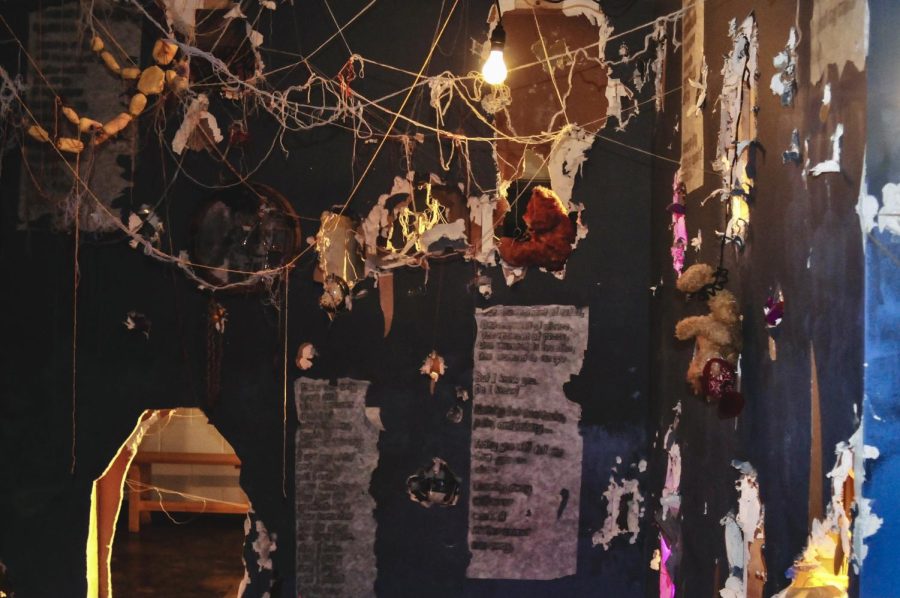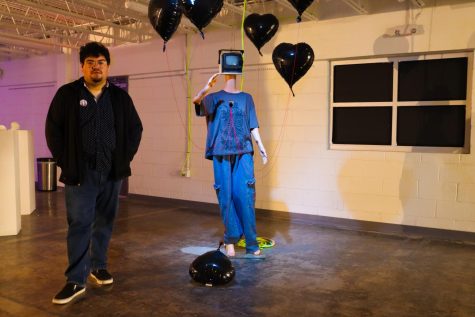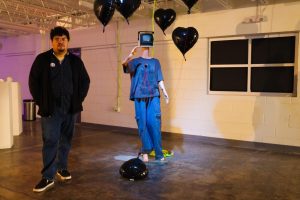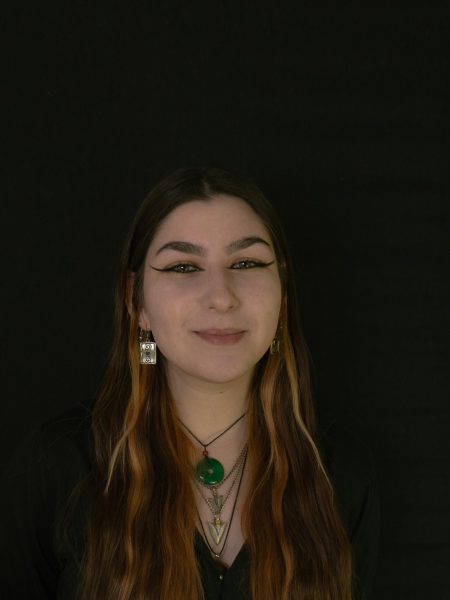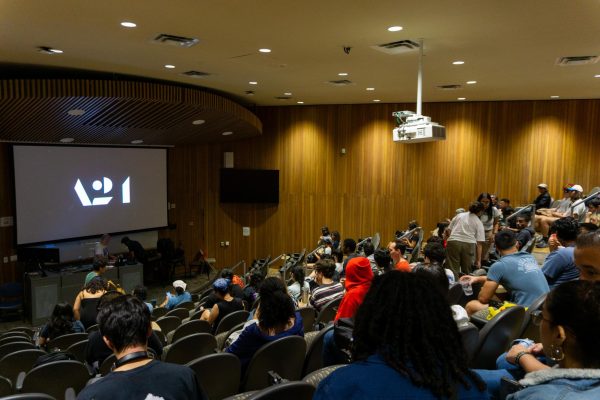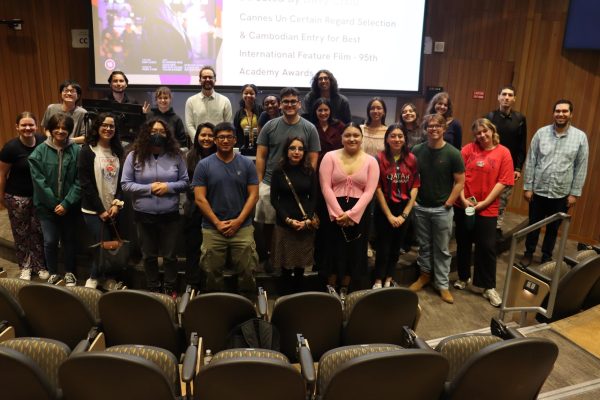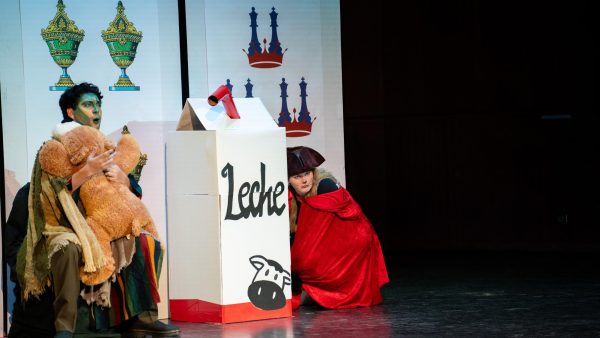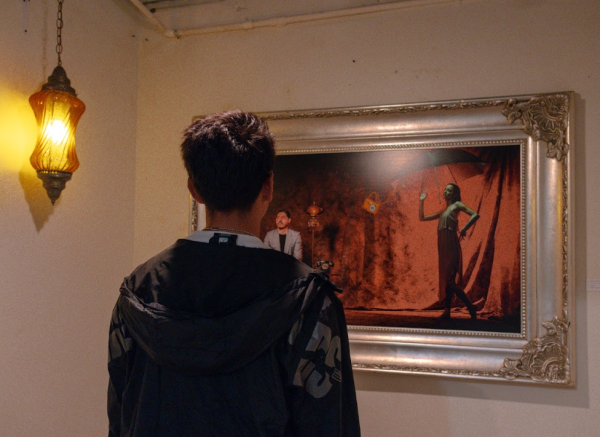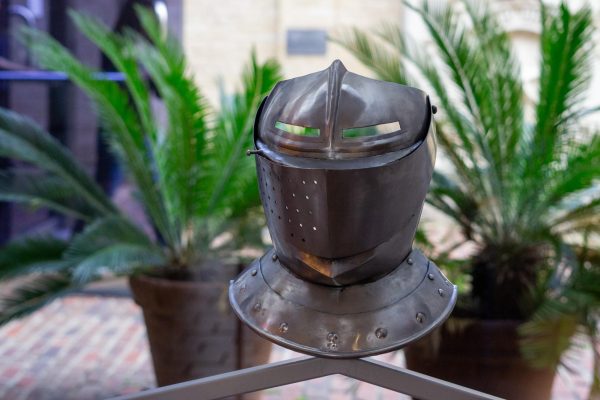Addicted to SAY Sí: A look into their new exhibit
April 18, 2023
SAY Sí is just what San Antonio needs. This nonprofit organization on the Westside of San Antonio offers after-school art programs for middle and high school students. They prioritize economically disadvantaged youth, providing them with four different studios to learn from: The Visual Arts studio, the Media Arts studio, the HIVE New Media Studio and the ALAS Youth Theatre Company.
Currently, SAY Sí’s gallery space is hosting artworks from this year’s student-led interdisciplinary art project, “Stories Seldom Told: User Interface.” This exhibit had students from all four studios create a project focusing on addiction and its effect on youth. The Paisano spoke with students that collaborated on different artworks in this exhibit to learn more about their inspirations, processes and the stories they want to tell.
“Bound”
Tyler Garcia is a high school student from the Visual Arts studio who helped put together “Bound,” a three-dimensional art piece representing the imprint of substance abuse. Garcia explained how he and his group approached two pre-existing walls and promptly kicked them in, creating gashes in the drywall that they haphazardly attempted to fix. Members of this project contributed a variety of different elements, including stained glass made of glue and paint that filled in concave sections of the wall, distressed childhood objects placed purposefully within the piece and even a faceless puppet that is suspended across the two-walled room by a web of tangled string.
Garcia explained that personally, he had no need to take his anger out on the walls of this piece. Instead, he spent time distressing every object in the artwork with paint and grime. He also painted poems on the walls of the room that were reminiscent of stories he had heard in his childhood.
In the end, Garcia wanted to emphasize that children who live in these situations are often overlooked.
“We wanted to have fun distressing it, but we wanted to show that this is a real situation for a lot of people,” Garcia said.
“Dungeons and Dopamine”
Next up is “Dungeons and Dopamine,” a strangely fun twist on addiction. In this project, students created a version of Dungeons and Dragons inspired by the dominance of addiction in modern society.
Emmanuelle Maher, an instructor from the HIVE New Media studio, explained that their group developed their own characters and world and then had the opportunity to role-play and learn more about substance abuse.
“In education, drugs seem to be treated as very black and white morally, and so we did something [with middle school students] that allowed them to learn more about addiction but in a safe space,” Maher explained.
Through trials of this project, Maher noticed that kids are largely disinterested in drugs. They had no interest in going “hog wild” in the game.
“That can speak to how decriminalization works in other countries, where usage is down because it’s not illegal; therefore, it’s not sensationalized,” Maher shared.
“Polo”
Then, high school students Alyssa Ruiz and Soly Gutierrez elaborated upon “Polo,” a stop-motion short film and interactive artwork that they helped create.
Polo focuses on the impact of smoking on children. During the opening night of “User Interface,” Ruiz and Gutierrez’s group had a lifeless, cartoonish frog built out of clay that was filled with candy cigarettes that people took throughout the night. Children were especially hooked on these sugary cigarettes, and Ruiz explained how this demonstrates how “although addiction is normalized, it can have a big impact on children, friendships and family.”
The video aspect of this artwork showed the dialogue of a chain-smoking frog. The group went into their satirical video with little planning, avoiding a storyboard altogether and building it around a script. They pushed themselves to the limit and ran into a few bumps along the way, such as trying to figure out how to show the frog was smoking – they decided to cut the cigarette shorter every few seconds, and rushing to find voice actors – a SAY Sí alumnus from the first ever class stepped in as the voice for the main character.
Ruiz discussed how her little siblings are always excited to see the films she creates at SAY Sí, and both Ruiz and Gutierrez just seemed thankful to have SAY Sí in their lives.
“San Antonio Addict Sim”
This last project took the concept of “User Interface” to the extreme. Noah Christopher collaborated on this artwork and explained how elements of coding, visual art and storytelling were all meshed together to create something truly unique.
Christopher’s group coded a choose-your-own adventure-type game that randomly generates each player a background story that serves as the starting point for a life filled with peer pressure.
Projected on a white wall, your own life story is written out before you, and you are forced to make hard decisions that will impact your outcome. Should you call an ambulance when your friend overdoses at a party? Should you reconcile with your parents even though they have been addicts all of your life? When thinking about addiction among adolescents, this group was reminded of the difficult decisions they have been forced to face due to drug use in their communities.
This group realizes that it is essential to learn from others’ stories, too, so they encourage you to tape your story, which is printed out on receipt paper at the end of your game, on the wall to be displayed before all future players.
SAY Sí provides extraordinary opportunities for San Antonio youth, and they are always working on something new. Now that the students at SAY Sí have finished their projects for the “User Interface” exhibit, they are turning their focus toward creating short films for an upcoming competition.
Keep up with all that SAY Sí does at www.saysi.org or on Instagram @saysi_sa.

